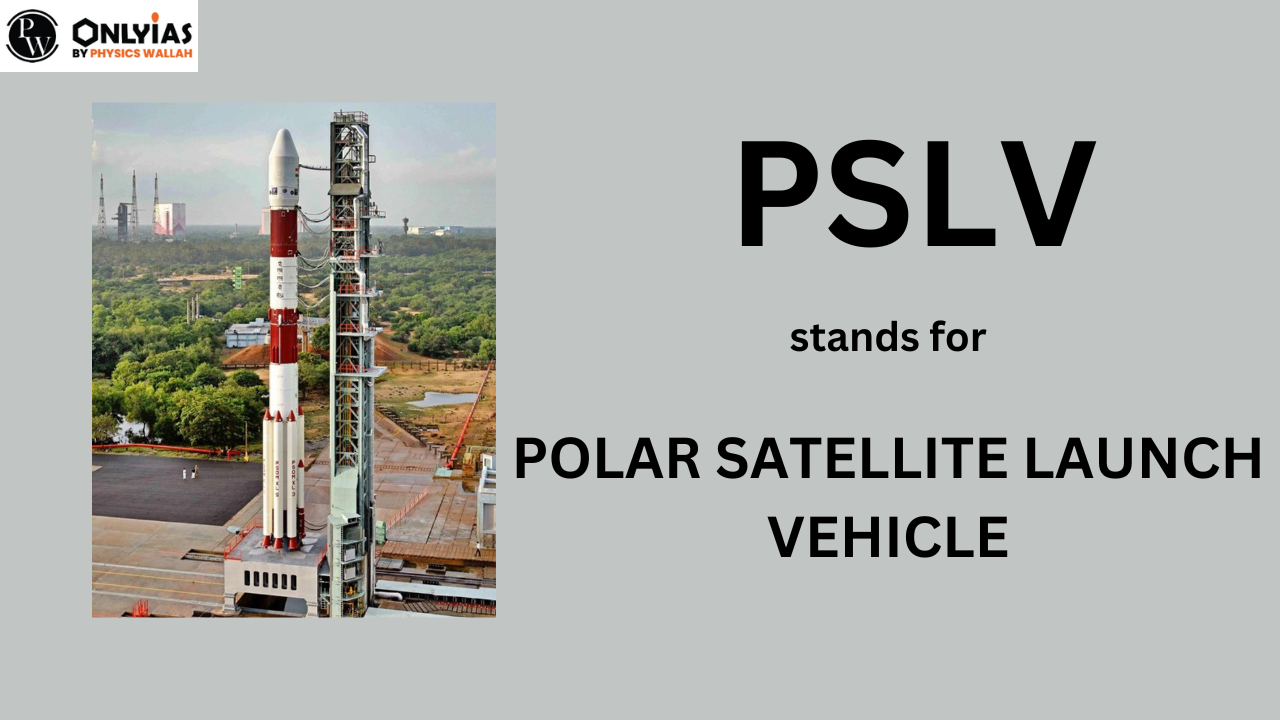![]() Ananya Gupta
Ananya Gupta
![]() September 13, 2023 05:00
September 13, 2023 05:00
![]() 3244
3244
![]() 0
0
PSLV Full Form: Discover the full form of PSLV 'Polar Satellite Launch Vehicle.' Explore its role in India's space program and its significance in launching satellites into polar orbits.

PSLV stands for Polar Satellite Launch Vehicle. It’s an expendable launch vehicle developed by the Indian Space Research Organization (ISRO) to launch satellites into polar orbits. It has been used for a wide range of missions, including launching Earth observation satellites, communication satellites, and scientific payloads into polar orbits around the Earth.
Here are some key features and information about the PSLV:
Variants: The PSLV comes in various configurations, including the PSLV-G (standard version), PSLV-CA (Core Alone), and PSLV-XL (extended version). Each variant is tailored for specific mission requirements.
Payload Capacity: The PSLV can carry payloads ranging from a few hundred kilograms to over a ton, depending on the specific variant and mission requirements.
Versatility: It is known for its adaptability and ability to launch satellites into a variety of orbits, including polar orbits, geostationary transfer orbits (GTO), and sun-synchronous orbits (SSO).
Reliability: The PSLV has earned a reputation for its reliability and cost-effectiveness, making it a popular choice for satellite launches not only for Indian payloads but also for international customers.
Notable Missions: The PSLV has conducted several remarkable missions, including the Mars Orbiter Mission (Mangalyaan) in 2013 and the launch of numerous small and large satellites for various purposes.
Contributions: It has played a crucial role in India’s space program and has been instrumental in Earth observation, remote sensing, navigation, and communication satellite deployments.
The Polar Satellite Launch Vehicle (PSLV) possesses several key characteristics and features that make it a highly versatile and reliable launch vehicle:
The Polar Satellite Launch Vehicle (PSLV) is available in several variants, each with its own technical specifications tailored to specific mission requirements. Here are some general technical specifications of the PSLV-G (the standard variant) and the PSLV-XL (the extended variant), which are commonly used:
PSLV-G (Standard Variant):
PSLV-XL (Extended Variant):
The Polar Satellite Launch Vehicle (PSLV) has several variations or configurations, each designed to meet specific mission requirements. These variations differ in terms of payload capacity, number of strap-on boosters, and other technical aspects. Here are some of the notable PSLV variations:
The Polar Satellite Launch Vehicle (PSLV) is a four-stage launch vehicle developed and operated by the Indian Space Research Organization (ISRO). Its design incorporates a combination of solid and liquid rocket stages to achieve reliable and cost-effective satellite launches. Here is an overview of the design and components of the PSLV:
1. First Stage (PS1 – S139):
2. Second Stage (PS2 – L40):
3. Third Stage (PS3):
Function: The third stage continues the ascent and is responsible for injecting the payload into its initial orbit. In the PSLV-G variant, it is a solid rocket motor, while in the PSLV-XL variant, it uses a liquid-fueled engine.
4. Fourth Stage (PS4):
5. Payload Fairing (PLF):
6. Navigation and Guidance Systems:
The PSLV is equipped with onboard navigation and guidance systems, including an Inertial Navigation System (INS) and onboard computers. These systems ensure precise control and trajectory optimization throughout the flight.
7. Strap-on Boosters (Optional):
The development of the Polar Satellite Launch Vehicle (PSLV) by the Indian Space Research Organisation (ISRO) is a significant achievement in India’s space program. The PSLV has been instrumental in launching numerous satellites into space and has contributed to India’s self-reliance in satellite launch capabilities. Here is an overview of the research and development (R&D) involved in the creation and evolution of the PSLV:
1. Early Research and Conceptualization: The development of the PSLV began in the early 1980s. ISRO recognized the need for a reliable and cost-effective launch vehicle to deploy satellites into polar and geosynchronous orbits. Extensive research was conducted to determine the optimal design and propulsion technologies for the PSLV.
2. Propulsion System Development: The PSLV incorporates both solid and liquid propulsion systems. The solid rocket motors used in the first and second stages required significant research and development efforts to ensure their performance and reliability.
3. Structural Design: The structural design of the PSLV, including the configuration of stages and payload fairing, underwent detailed analysis and testing. Engineers worked on optimizing the vehicle’s aerodynamics and structural integrity.
4. Guidance and Control Systems: R&D efforts were dedicated to developing advanced guidance, navigation, and control systems for the PSLV. These systems are crucial for ensuring accurate trajectory and orbit insertion.
5. Payload Integration: Research was conducted to create adaptable payload integration interfaces that could accommodate a wide range of satellite payloads, from small cubesats to larger communication satellites.
6. Cost Optimization: A key goal in the development of the PSLV was cost optimization. ISRO focused on reducing the launch vehicle’s overall cost, making it an attractive option for both domestic and international satellite operators.
7. Prototyping and Testing: Extensive prototyping and testing were carried out to validate the performance of various components and systems. This included ground tests and flight tests to ensure the vehicle’s reliability.
8. Evolution and Upgrades: Over the years, the PSLV has undergone several upgrades and improvements. Variants like the PSLV-XL and PSLV-CA were developed to expand its capabilities and accommodate different mission requirements.
9. Operational Experience: ISRO’s operational experience with the PSLV has provided valuable insights and data for ongoing research and development. Each successful mission contributes to the refinement of the launch vehicle and its systems.
10. International Collaboration: ISRO has engaged in international collaboration and knowledge-sharing to enhance its launch vehicle technology. Collaborations with other space agencies and organizations have contributed to the R&D process.
<div class="new-fform">
</div>

Latest Comments